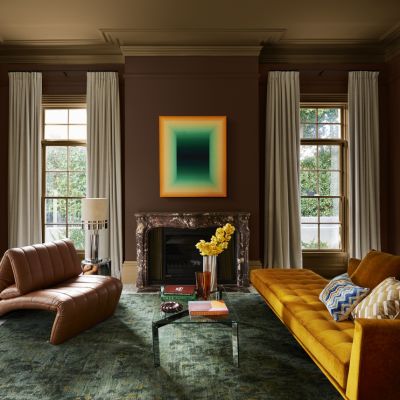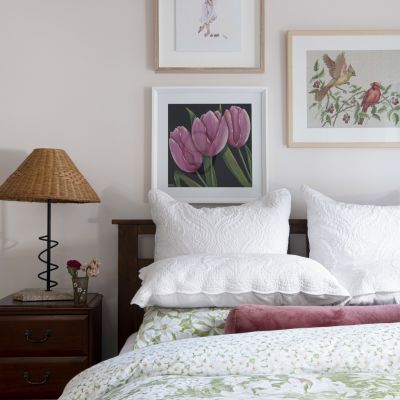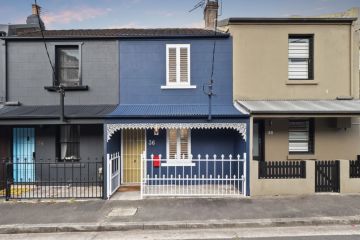This artist is modernising an ancient craft: weaving
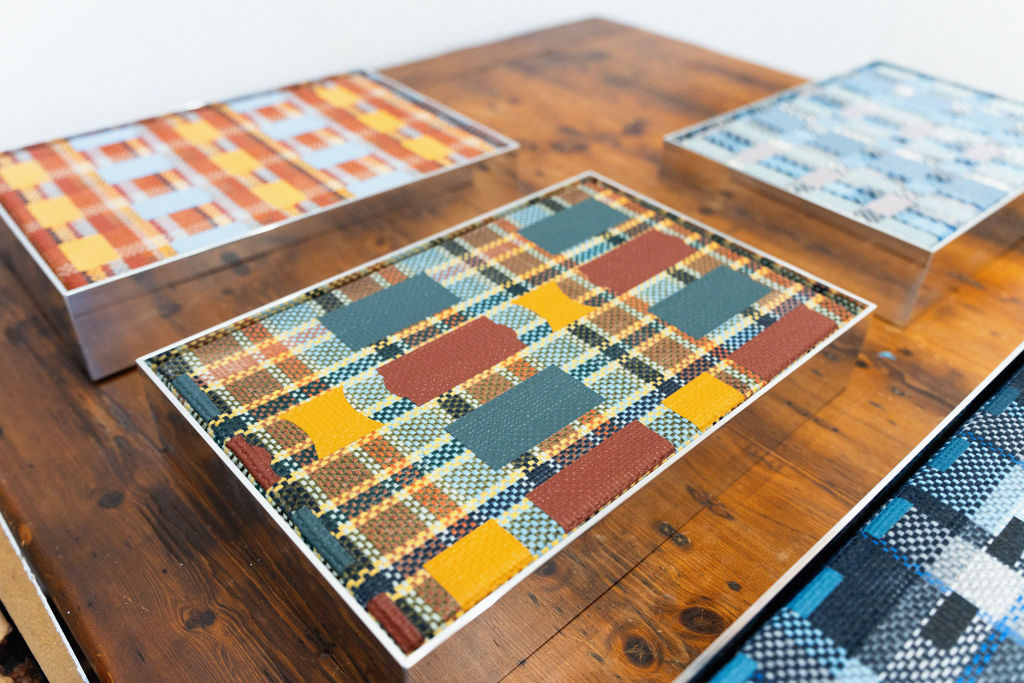
No one taught Tia Ansell how to weave. “It was a lot of self-discovery. And lots of Youtube,” the New Zealand-born, Melbourne-based artist says. Ansell creates one-of-a-kind artworks inspired by patterns and design found in her urban surroundings. Think brickwork, tiles and clusters of buildings. “I walk to and from the studio every day,” she says. “I’m constantly on the lookout for inspiration in the neighbourhoods I pass through.”
Working across three looms of various sizes at any given time, Ansell uses weaving techniques to craft a canvas of sorts before applying geometric elements in paint to complete each piece. She generally works with cotton, linen and silk to form rigid, textural backdrops.
“Often an artist’s tools, like a canvas or paintbrush, become invisible. But I just thought, ‘What if the fabric is a main character and holds an important role within the final image?’” Ansell says. “There’s a beautiful relationship between the paint and the geometric design underneath.”
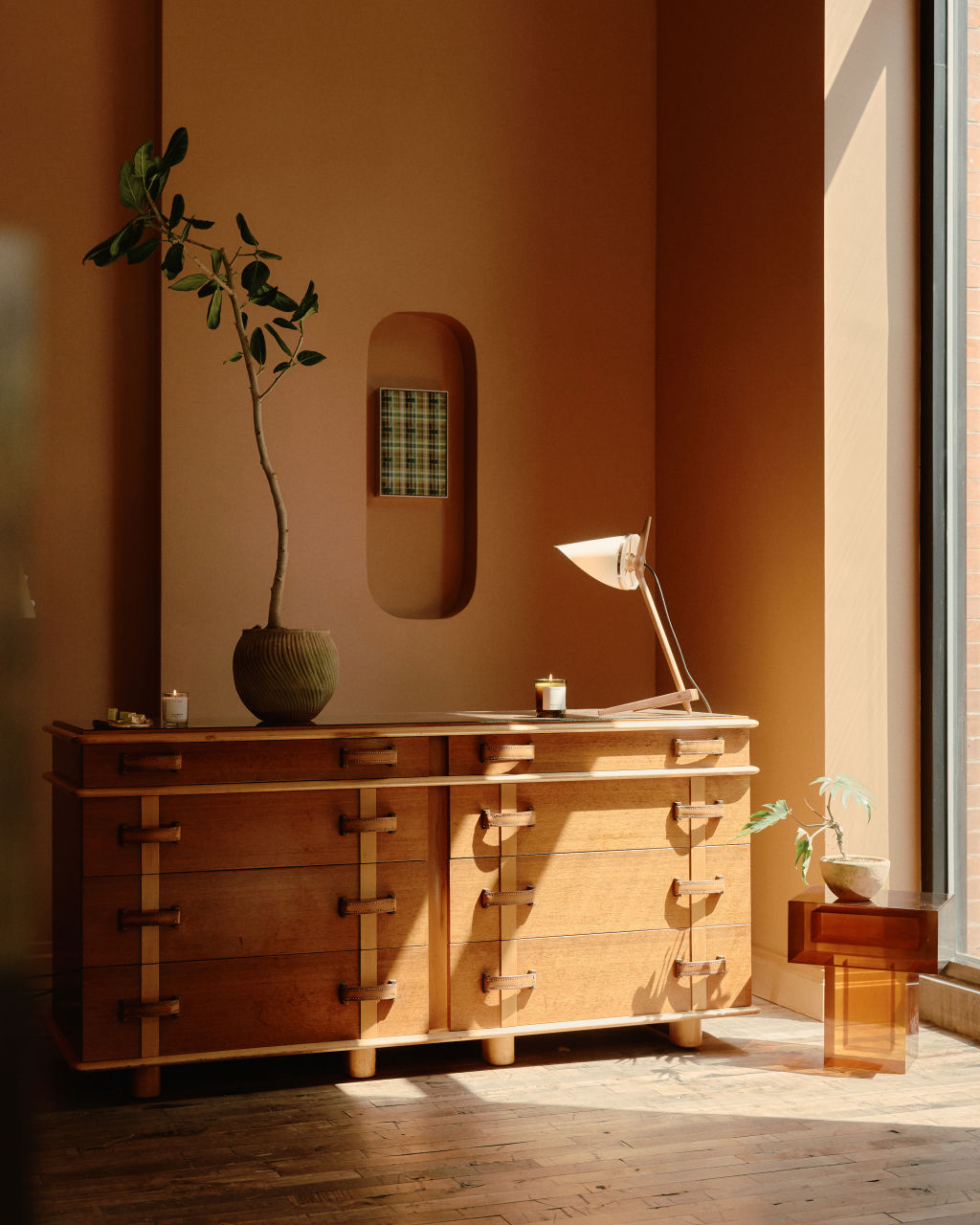
Family holidays to Samoa, Argentina and Peru while growing up sparked something of an obsession over weaving. More recently, she’s spent time travelling in Sri Lanka, Canada, Ecuador and Colombia to fuel her passion. “Weaving is an inherent part of human culture. It offers an incredibly vibrant way of storytelling.” In the coming months, she’ll join a collaborative weaving project in Ljubljana, Slovenia, working with five other weavers to create a 10-metre piece.
In her Fitzroy studio, Ansell prepares the looms herself. She devises a unique “code” for each piece, threading hundreds of strands of fabric onto the device. “When I start a new work, I have to pull each thread individually through the pedals,” Ansell explains. “I call it ‘going fishing’. It’s important to get the right tension and make sure the sequence is correct.” Once the warp is set, she uses weft strands to add colour and pattern, creating tartan-like designs.
Complete pieces of fabric are then stretched across bars to create a canvas before Ansell uses paint to further enhance the abstract nature of the works. Depending on the size of the work, the entire process can take anywhere from 10 days to a month.


Signature aluminum box frames complete each of the artist’s pieces. “It’s an industrial material but it also reflects light in the works,” she says. “When [a piece] is hanging on a wall, it can become much larger than itself because of the reflection.”
Ansell’s intricate works have caught the eye of influential names, including pop star Troye Sivan. A career highlight was when New Zealand interior designer and art collector Sonja Hawkins picked out a large-scale piece, inspired by a building on Collins Street, for a residential project in the South Island. Another was the time her work made the cover of Vogue Living, featured in a home designed by David Flack.
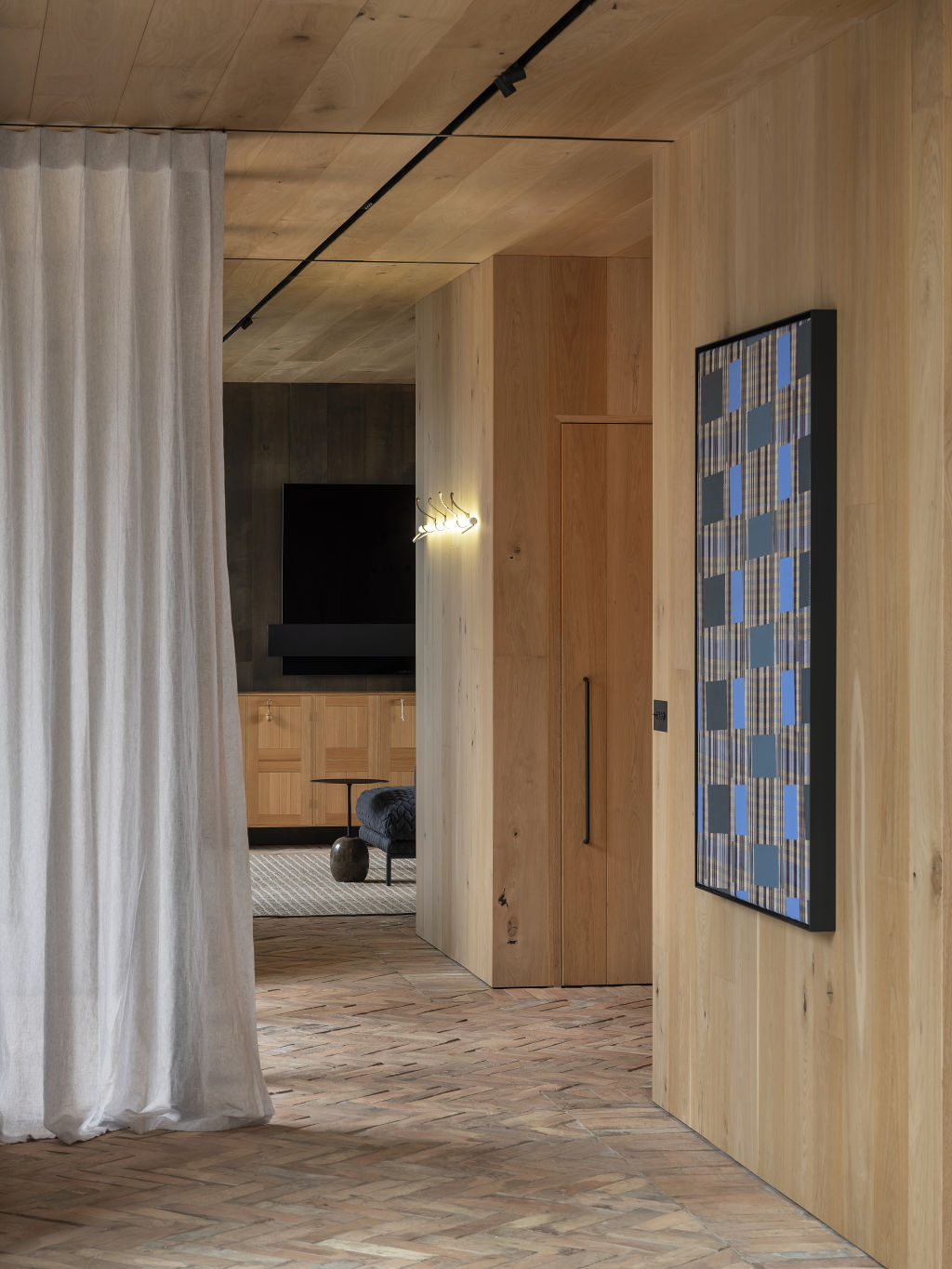
Though she hasn’t worked on many commissions yet, Ansell recalls a collector who wanted her to respond to a window decorated with flannel flowers in his house. “I made a series of works based on it, which are now part of his collection.”
Referencing architectural structures and patterns, Ansell’s pieces seamlessly fit into interiors. “They are also fabric, which is something that we conditionally live within our everyday,” she explains. “We sleep in it, we wear it, we sit on it – it translates very naturally within a livable environment.”
We recommend
We thought you might like
States
Capital Cities
Capital Cities - Rentals
Popular Areas
Allhomes
More
- © 2025, CoStar Group Inc.
